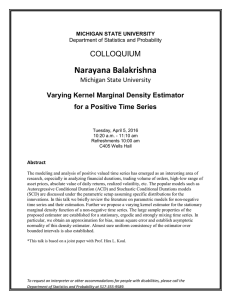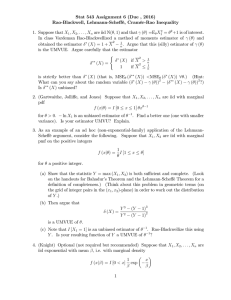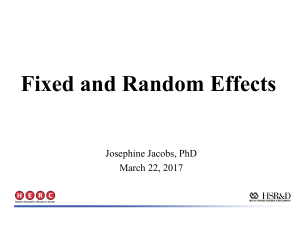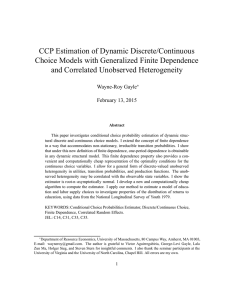Download Assignment 7
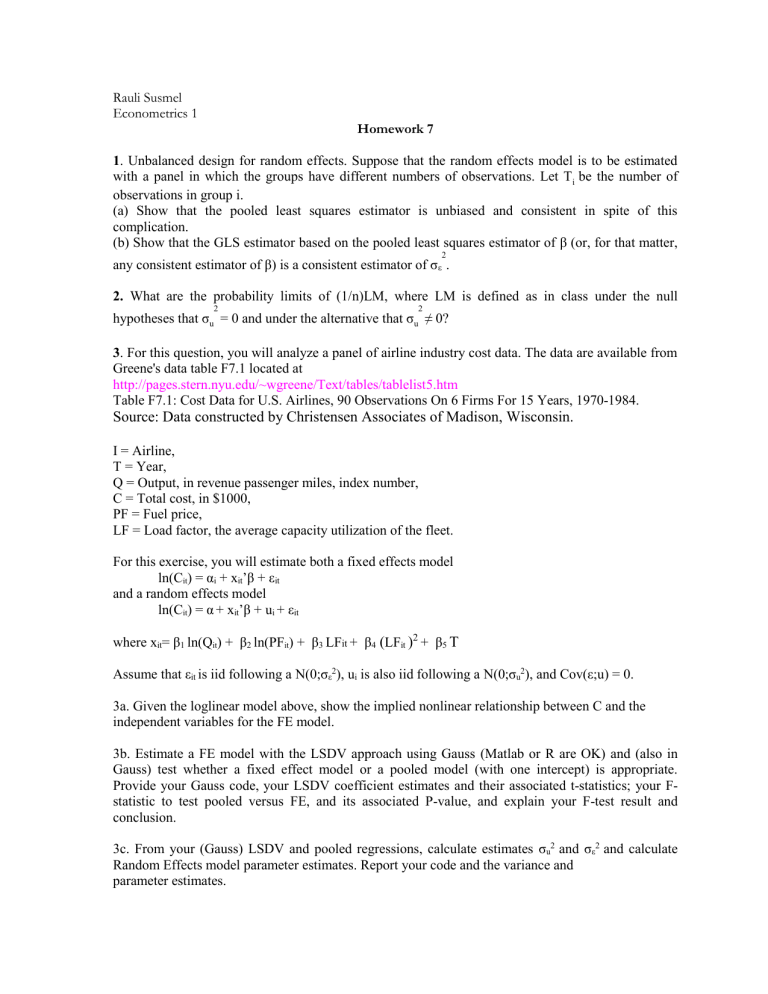
Rauli Susmel
Econometrics 1
Homework 7
1 . Unbalanced design for random effects. Suppose that the random effects model is to be estimated with a panel in which the groups have different numbers of observations. Let T i be the number of observations in group i.
(a) Show that the pooled least squares estimator is unbiased and consistent in spite of this complication.
(b) Show that the GLS estimator based on the pooled least squares estimator of β (or, for that matter, any consistent estimator of β) is a consistent estimator of σ
ε
2
.
2. What are the probability limits of (1/n)LM, where LM is defined as in class under the null hypotheses that σ u
2
= 0 and under the alternative that σ u
2
≠ 0?
3 . For this question, you will analyze a panel of airline industry cost data. The data are available from
Greene's data table F7.1 located at http://pages.stern.nyu.edu/~wgreene/Text/tables/tablelist5.htm
Table F7.1: Cost Data for U.S. Airlines, 90 Observations On 6 Firms For 15 Years, 1970-1984.
Source: Data constructed by Christensen Associates of Madison, Wisconsin.
I = Airline,
T = Year,
Q = Output, in revenue passenger miles, index number,
C = Total cost, in $1000,
PF = Fuel price,
LF = Load factor, the average capacity utilization of the fleet.
For this exercise, you will estimate both a fixed effects model ln(C it
) = α i
+ x it
’β + ε it and a random effects model ln(C it
) = α + x it
’β + u i
+ ε it where x it
= β
1 ln(Q it
) + β
2 ln(PF it
) + β
3
LF it
+ β
4
(
LF it
)
2
+ β
5
T
Assume that ε it is iid following a N(0;σ
ε
2 ), u i is also iid following a N(0;σ u
2 ), and Cov(ε;u) = 0.
3a. Given the loglinear model above, show the implied nonlinear relationship between C and the independent variables for the FE model.
3b. Estimate a FE model with the LSDV approach using Gauss (Matlab or R are OK) and (also in
Gauss) test whether a fixed effect model or a pooled model (with one intercept) is appropriate.
Provide your Gauss code, your LSDV coefficient estimates and their associated t-statistics; your Fstatistic to test pooled versus FE, and its associated P-value, and explain your F-test result and conclusion.
3c. From your (Gauss) LSDV and pooled regressions, calculate estimates σ u
2 and σ
ε
2 and calculate
Random Effects model parameter estimates. Report your code and the variance and parameter estimates.






